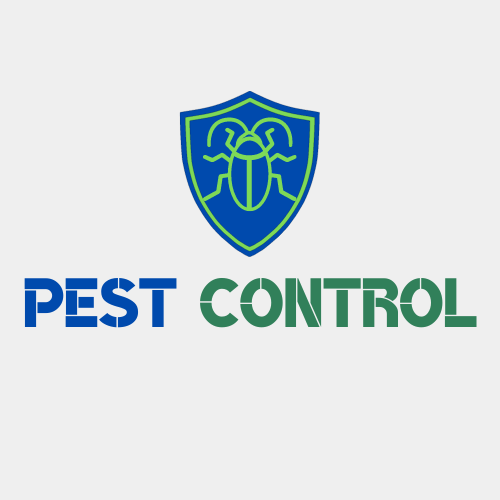Innovative Pest Control Strategies for Residential and Industrial Settings in Juárez
In the picturesque community of Residencial Santa Julia, located in Juárez, the quest for effective pest control goes beyond traditional measures. The evolving landscape of pest management is characterized by innovative techniques that prioritize both efficacy and environmental responsibility. As we delve into the future of pest control in this region, it becomes evident that utilizing advanced technology and a comprehensive approach can lead to sustainable solutions for both residential and industrial facilities.
Utilizing Laser Systems for Flying Insect Control
One of the most groundbreaking methods of pest control being explored is the use of laser systems for targeting flying insects. This advanced technology uses focused beams of light to eliminate pests such as flies and mosquitoes without the need for harmful chemicals. The precision of laser systems ensures that only the targeted insects are affected, drastically reducing the overall environmental impact of pest control measures. In Residencial Santa Julia, residents can benefit from this cutting-edge solution, which not only addresses prevalent flying insect issues but also aligns with eco-friendly practices.
Developing Pest-Resistant Industrial Facility Designs
In the industrial sphere, the focus has shifted towards developing pest-resistant designs for facilities. This forward-thinking strategy aims to create environments that are inherently less susceptible to infestations. By incorporating architectural features such as sealed entries, proper drainage systems, and strategic landscaping, industries can significantly reduce pest attraction and entry points. This proactive approach not only minimizes the need for frequent pest control interventions but also enhances the overall safety and hygiene of the workplace.
Encouraging Pest Control Strategies that Protect Pollinators
In an age where environmental conservation is imperative, pest control strategies must align with the goal of protecting pollinators. These vital creatures play a crucial role in our ecosystem, yet they often suffer collateral damage from traditional pest control practices. As part of a responsible pest management strategy, it is essential to encourage methods that prioritize the safety of bees, butterflies, and other pollinators. By transitioning to organic pest control solutions and targeted applications, both residential and industrial entities in Juárez can help preserve these essential species while effectively managing pest populations.
Integrated Pest Management (IPM) Approach
The Integrated Pest Management (IPM) approach stands at the forefront of modern pest control practices. IPM advocates for a holistic strategy that combines multiple methods of pest management, including biological, cultural, and physical controls, alongside chemical interventions when necessary. In Residencial Santa Julia, educational initiatives can raise awareness about IPM, allowing residents to implement techniques such as crop rotation, habitat management, and the use of natural deterrents. This sustainable framework not only addresses existing pest issues but also fosters a landscape where pest populations are inherently controlled through environmental stewardship.
Using GPS Technology to Track Pest Control Treatments
The advent of technology has ushered in new possibilities for monitoring and evaluating pest control efforts. Utilizing GPS technology to track pest control treatments allows for unprecedented precision and accountability. By mapping treatment zones and tracking application history, pest control professionals can identify patterns, optimize resources, and tailor interventions to suit the specific needs of each property. In communities like Residencial Santa Julia, this level of technological integration not only enhances the effectiveness of pest management strategies but also provides residents with transparent data regarding treatment operations.
Facilitating Ongoing Training for Staff in Pest Prevention
The success of any pest control strategy hinges not just on technology and design but also on the expertise of the personnel involved. Continuous training for staff in pest prevention is essential to staying ahead in the ever-evolving landscape of pest management. Regular workshops, certifications, and hands-on training sessions ensure that pest control professionals are equipped with the latest knowledge and tools to address the unique challenges they face. In Juárez, fostering a culture of continuous learning among pest management teams can lead to improved efficacy, as well as heightened community awareness regarding preventive measures.
Conclusion
The future of pest control in Residencial Santa Julia, Juárez, is characterized by innovation, responsibility, and sustainability. By embracing advanced technologies such as laser systems and GPS tracking, developing pest-resistant designs, and advocating for integrated pest management, residents and industries alike can pave the way for a healthier environment. Furthermore, protecting vital pollinator populations and facilitating ongoing training for pest control staff underscores a commitment to a balanced ecosystem.
In the realm of pest management, the emphasis must be on creating solutions that are not just effective but also responsible. As Juárez continues to grow and evolve, adopting these cutting-edge pest control strategies will be essential in ensuring the long-term health of both the community and the surrounding environment. With a concerted effort to blend technology, education, and eco-friendliness, the path forward is clear: a commitment to a future where pest control and environmental stewardship work hand in hand for a sustainable legacy.
In conclusion, the landscape of pest control in Juárez, particularly in areas like Residencial Santa Julia, is witnessing significant evolution. By incorporating innovative technology, strategic planning, and a commitment to education, we can create a pest-free environment that promotes health, safety, and sustainability for all residents. The time has come to embrace these advancements, not just for the sake of pest control but for the betterment of our communities and ecosystems.
